Recently, I experienced my first tire blowout while driving. And it happened in a loaner car! Because it was hot, I had the windows fully open and clearly heard the intense sound of the blowout, which still echoes in my ears. We never know when trouble will strike, so let’s always be prepared and have a plan.
This time, I want to focus on the base of the back of the guitar head. Please take a look at these photos first.
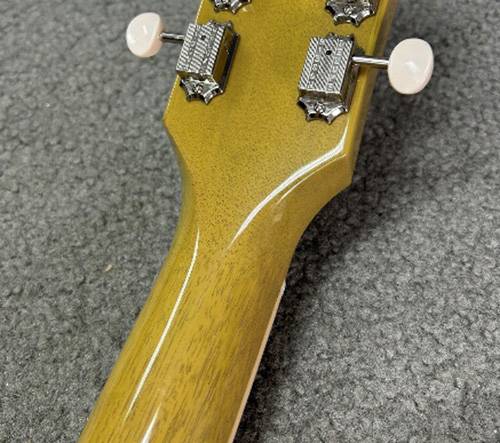
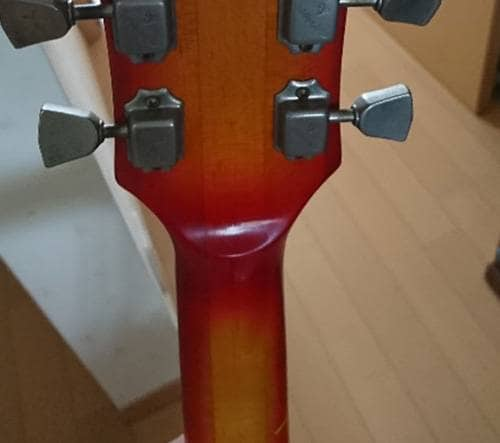
You can see the protrusion in the picture on the right. This part is called the ‘volute’.
It’s often seen on guitars with angled heads, like those from Gibson, Ibanez, and Martin, although the shape can vary slightly.
As you might guess, the primary role of this protrusion is reinforcement. Let’s delve deeper into what this volute does with some explanations.
① For Reinforcement
When you look at an angled headstock from the side, you can see that the thickness around the nut area is either thinner than or almost the same as the neck grip. This means that if the guitar falls, and the headstock hits the ground, the impact concentrates around the nut area, where the angle is. Because this part is thin, the headstock can break easily. It can really snap right off (if you’re curious, Google ‘guitar headstock break’). By adding a bulge in this area, it can purely increase the strength and help distribute and absorb the shock.
Additionally, most angled headstocks have the truss rod adjustment hole on the head side. The force applied to the truss rod’s fulcrum also affects this area, further increasing the potential for damage.
The tension from the strings supported by the nut and the truss rod’s force are constantly applied here, so there’s little room to withstand impact. This is why many brands, like Gibson and Ibanez, incorporate volutes.
② Manufacturing Reasons
This applies mainly to Martin guitars, especially older models. There are cases where volutes were adopted for manufacturing convenience.
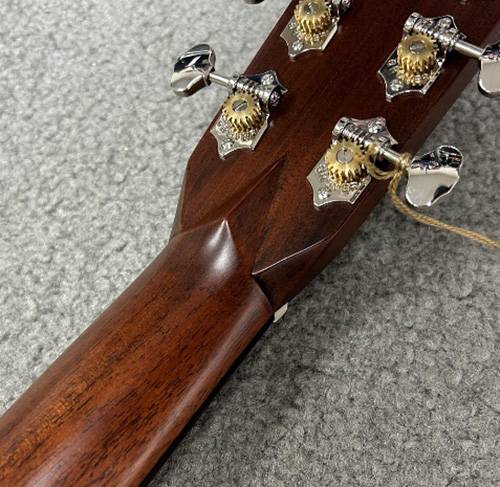
Martin’s distinctive volute is a remnant from when neck wood was spliced at this part. On old Martin models, the neck wood was joined and angled here, and this structure increased the glue area, improving strength. Additionally, combining flat wood pieces to create the angle allowed for more efficient use of the wood.
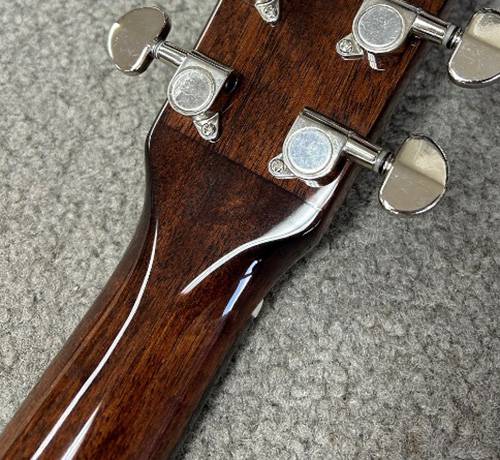
This model isn’t a Martin, but here’s how it looks when wood is joined at the head.
③ Decorative Purposes
This is also mainly seen with Martin guitars. As shown in the picture in the previous section, it has a very distinctive appearance, which also serves a decorative purpose. It’s called a pyramid or diamond volute, and for some, this design is quintessentially Martin. Having a feature that is specific to the brand on the back of the guitar is quite cool, isn’t it?
④ Additional Benefits
Moreover, the story about increasing the glue area when splicing neck wood also has some benefits when the headstock breaks.
When repairing a broken headstock, grooves are carved from the headstock towards the body to insert reinforcing material. Depending on the position of these grooves, the volute can help increase the glue area for these reinforcements, which is an additional benefit.
Extra
Q. If there are so many benefits, why don’t all models have volutes?
A. Because the original specifications of the guitar model didn’t include a volute when it was first released.
Let me explain. Even though there are many reasons to add a volute, both models with and without volutes are currently in the market. If the benefits outweigh the downsides, it would make sense to modify all models to have a volute. However, there’s a simple reason why this isn’t the case. Let’s take the Les Paul model as an example.
Epiphone Les Paul Standard '50s Metallic Gold
This gold top Les Paul looks cool, right? This model doesn’t have a volute. Why is that? The answer lies in the product name ‘Les Paul Standard '50s Metallic Gold’. The Les Paul was released in 1952, and back in the 1950s, it didn’t have a volute. As you can see from the product name, this model is a revival of the 1950s specifications, so it doesn’t have a volute.
Therefore, the answer is:
A. Because the original specifications of the guitar model didn’t include a volute when it was first released.
In summary, “Handle your guitar with care!
Sound House started carrying Gibson guitars as well. Check them out!





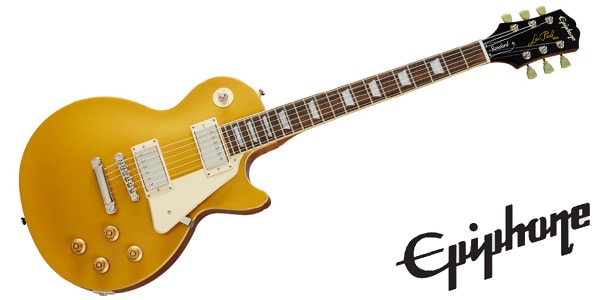


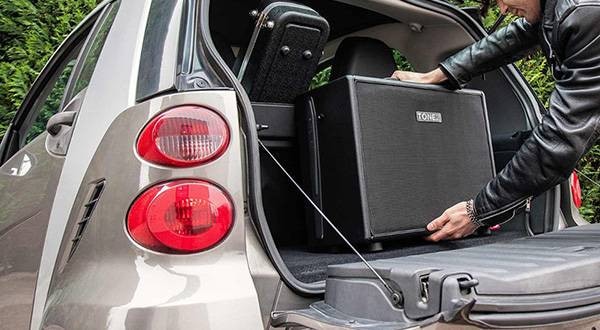
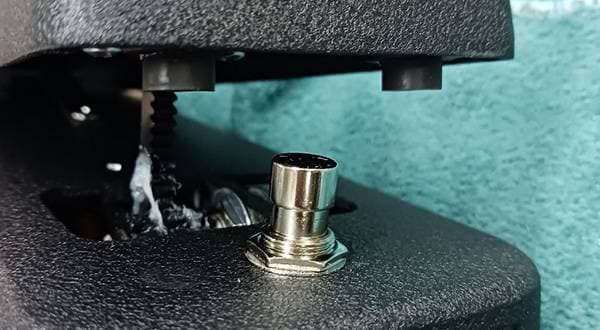
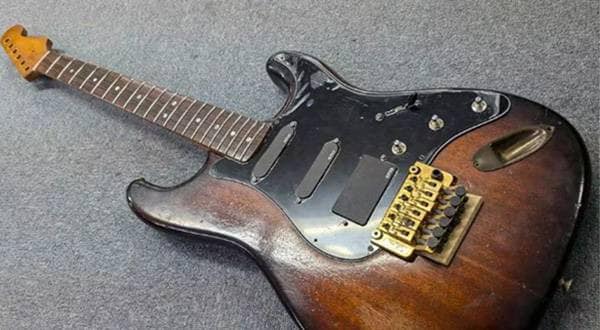
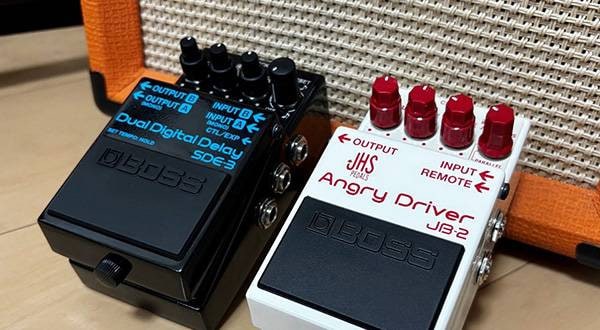
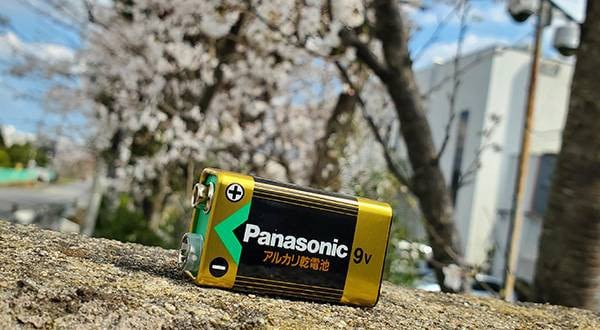
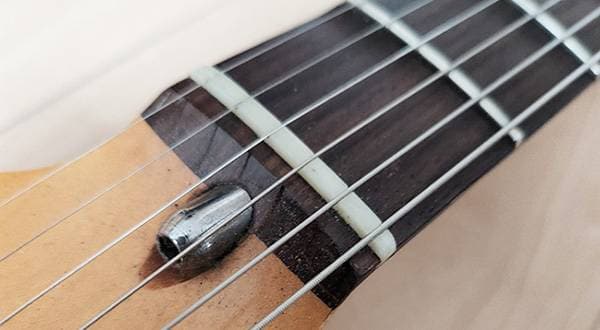
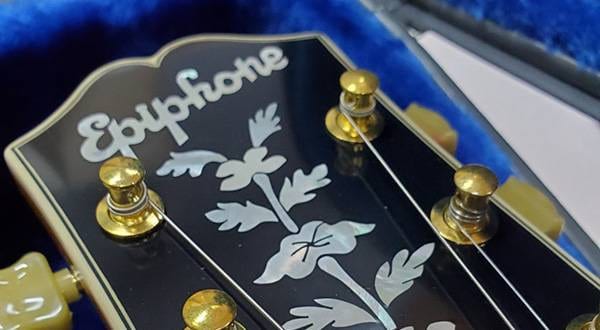
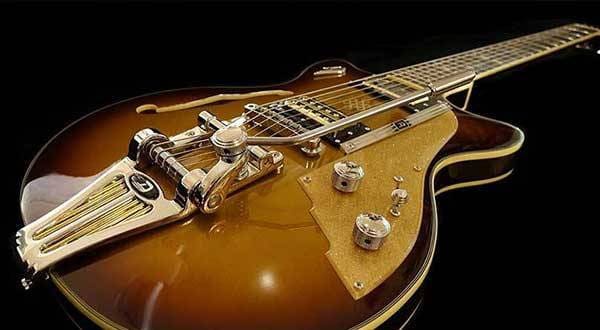
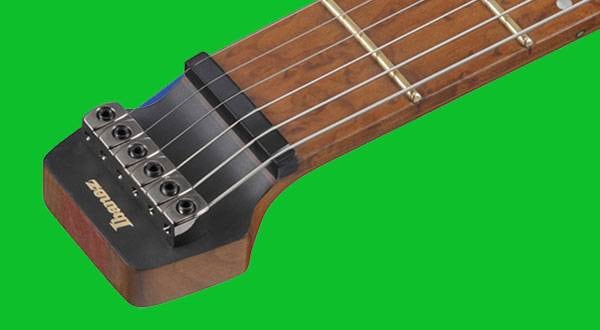
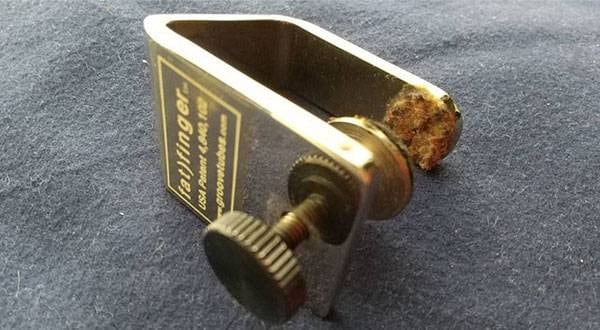
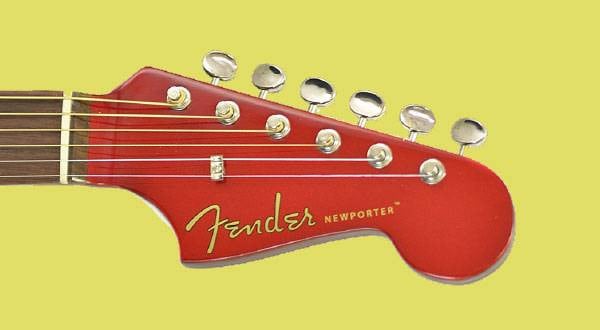
 ギターのお手入れ
ギターのお手入れ
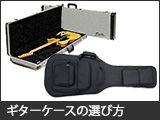 ギターケースの選び方
ギターケースの選び方
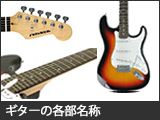 ギターの各部名称
ギターの各部名称
 ギター名人ラボ
ギター名人ラボ
 ギタースタートガイド
ギタースタートガイド
 めちゃラク!ギター講座
めちゃラク!ギター講座















